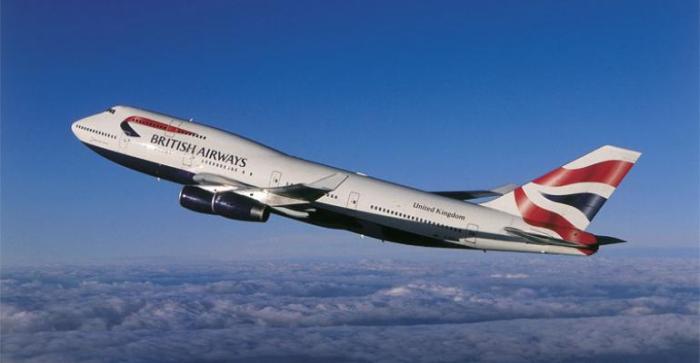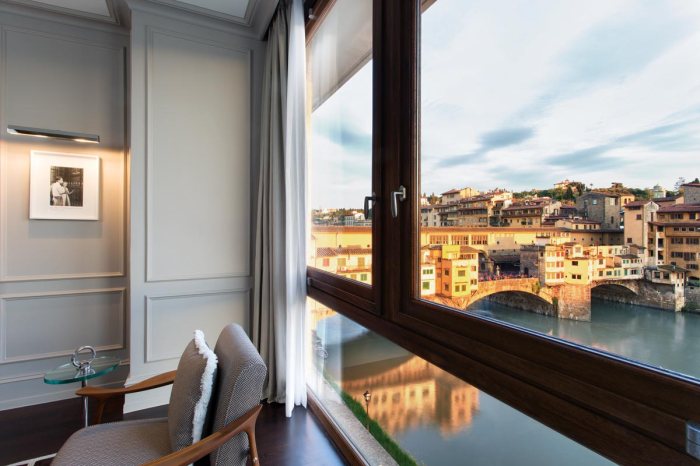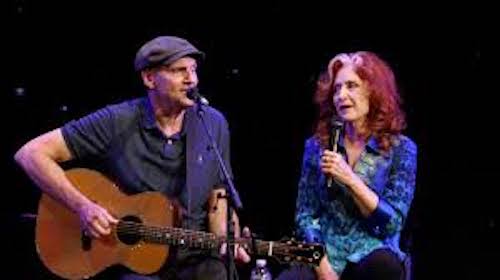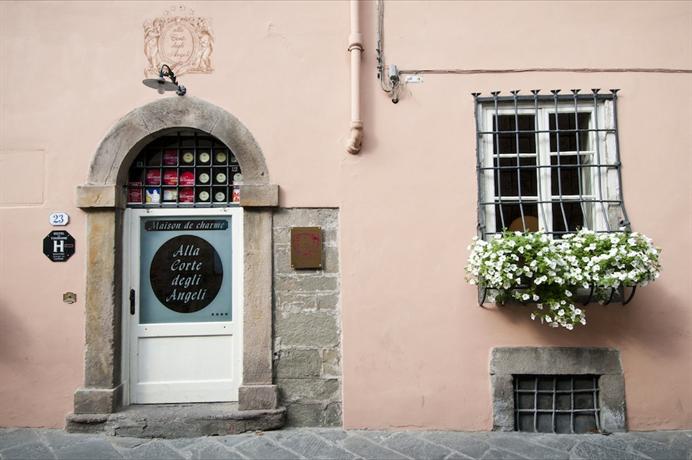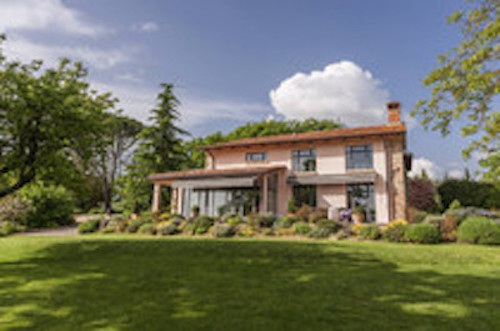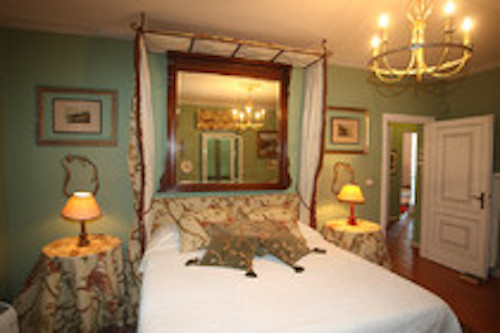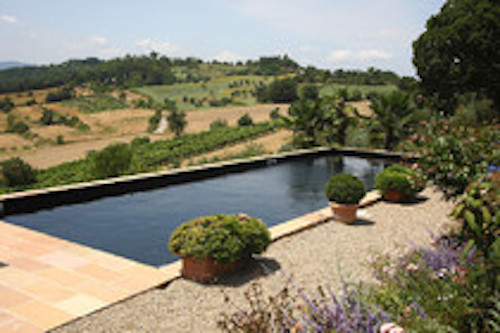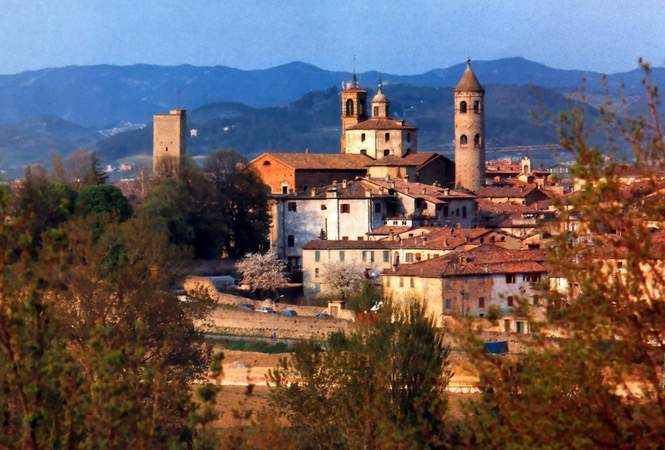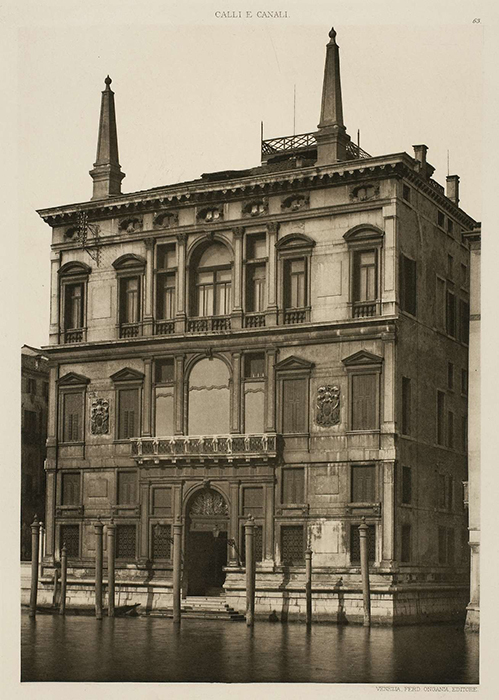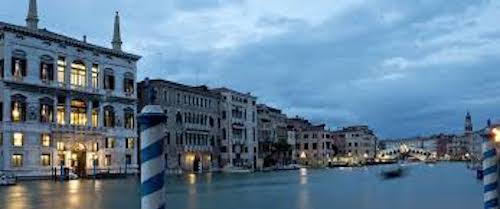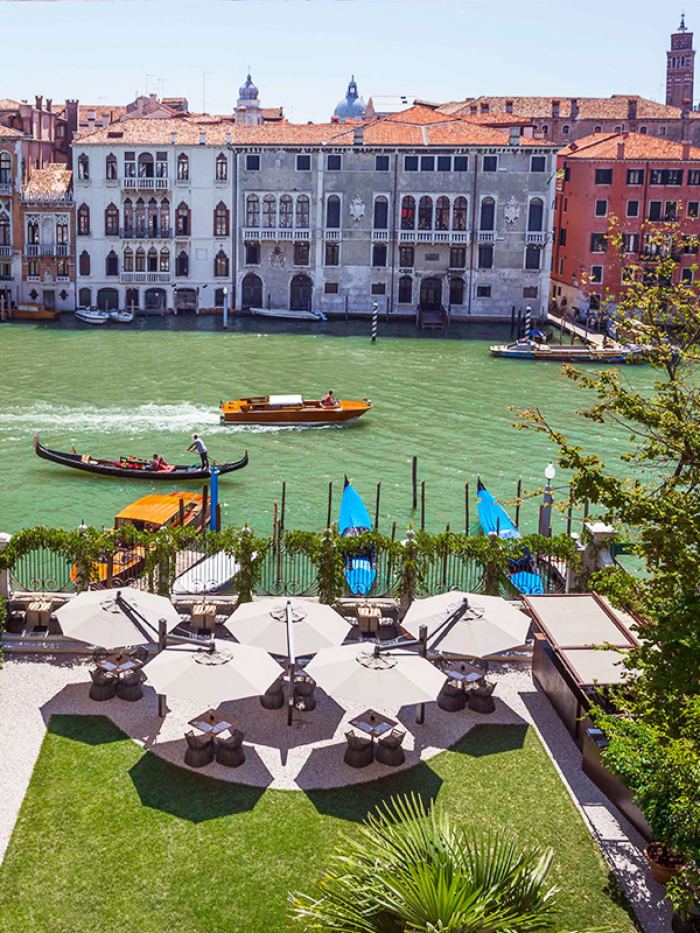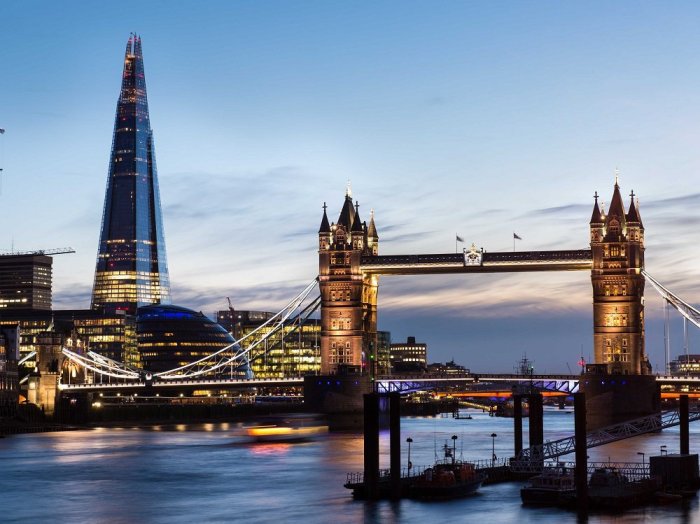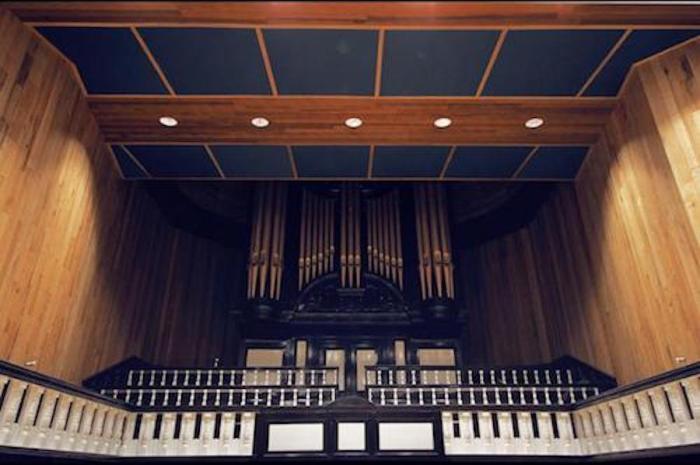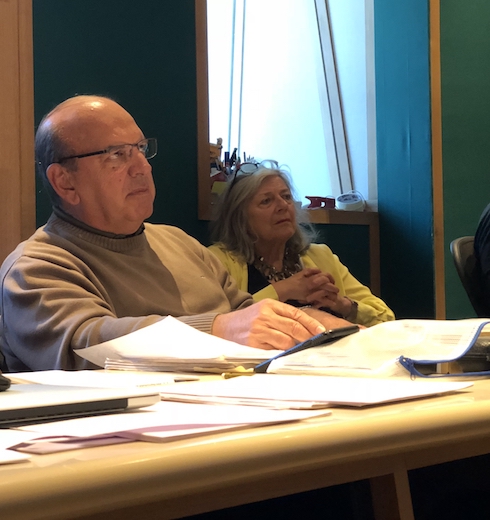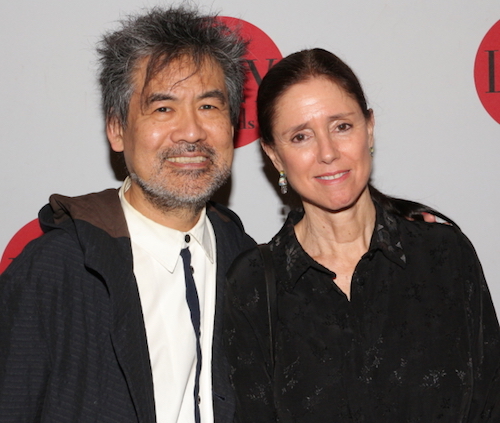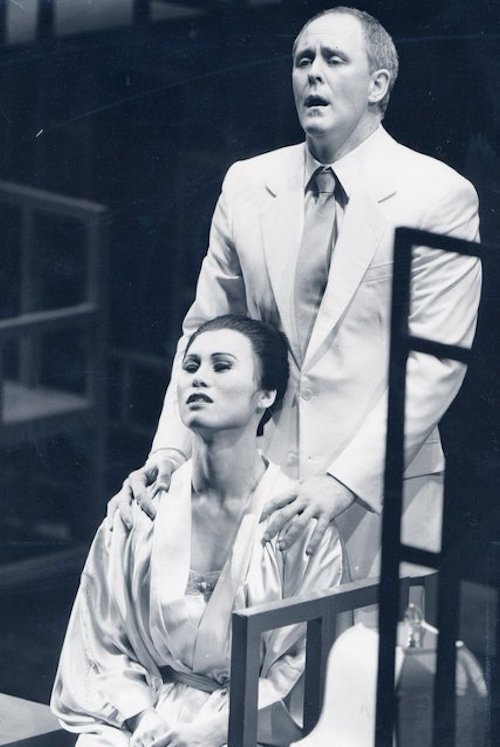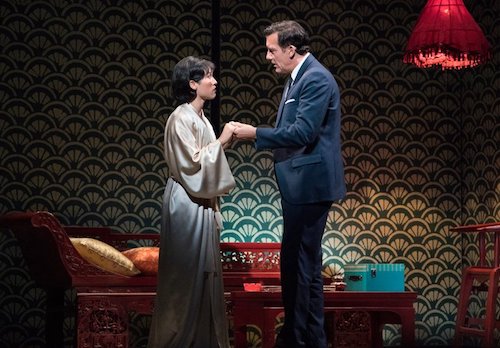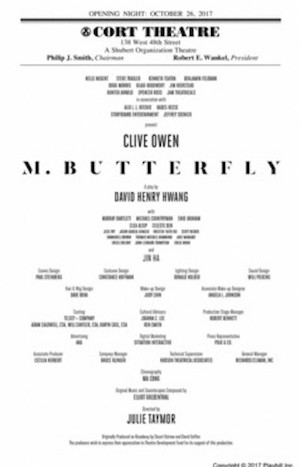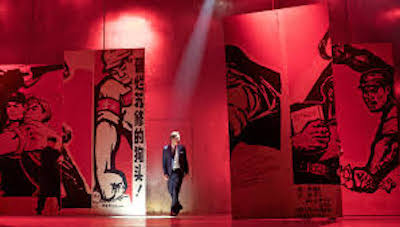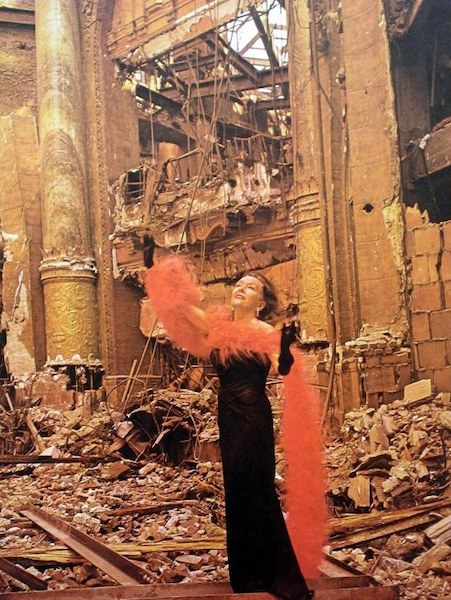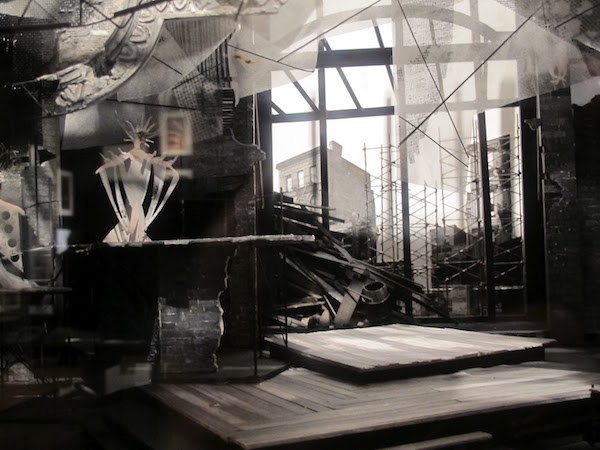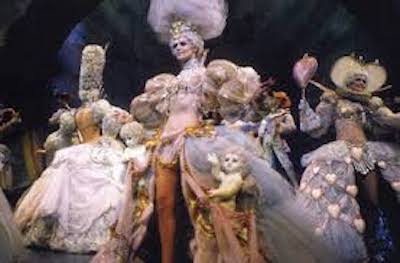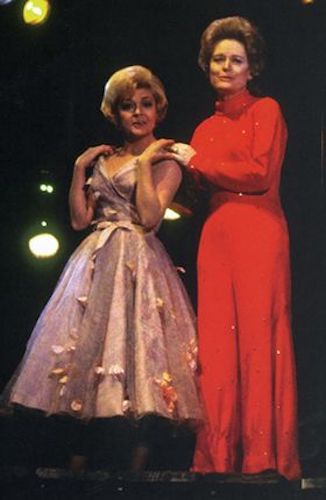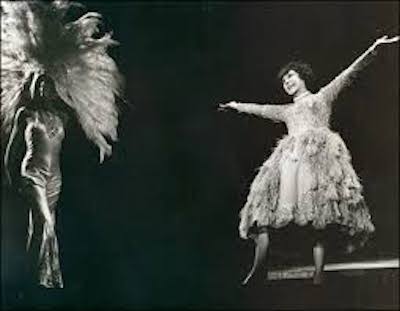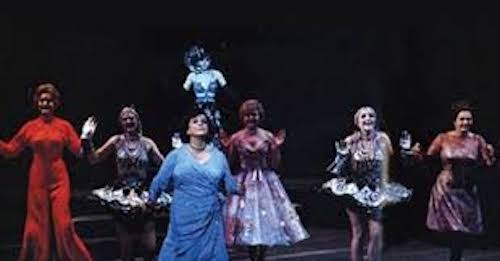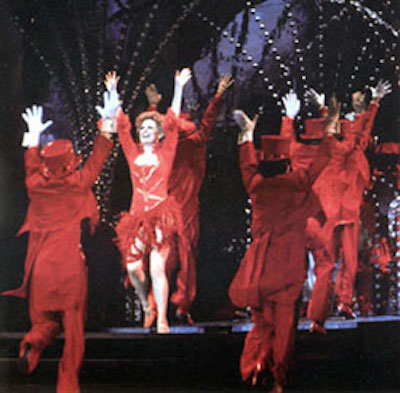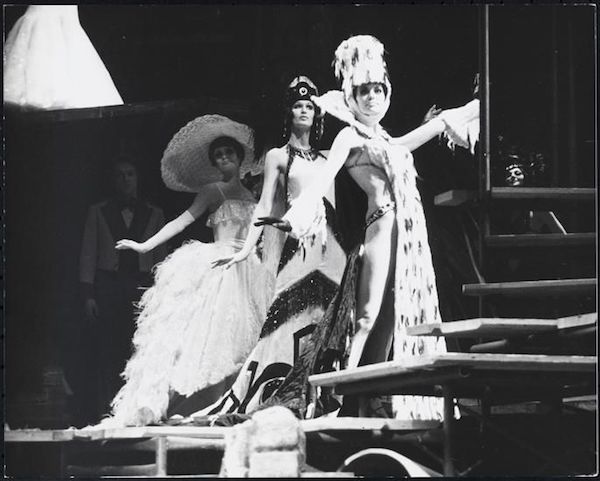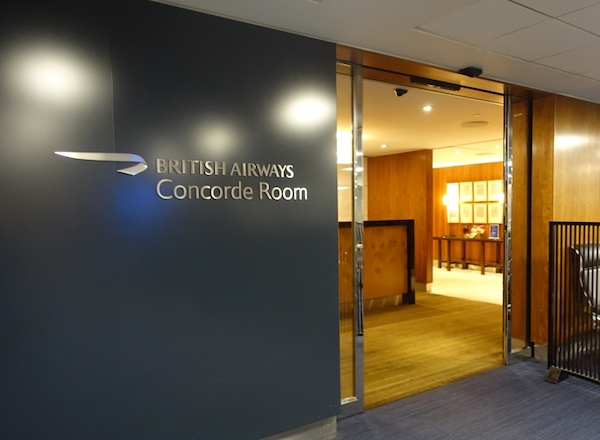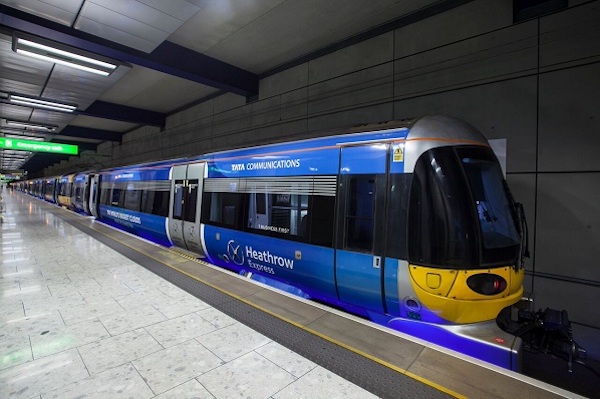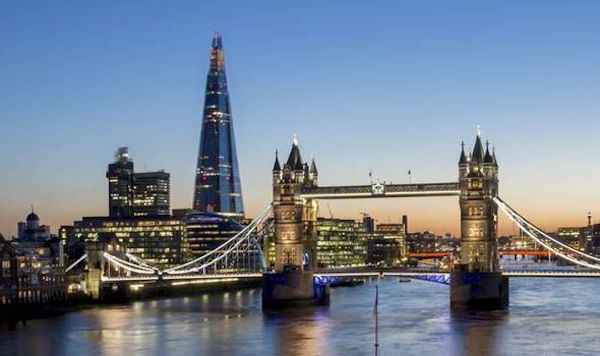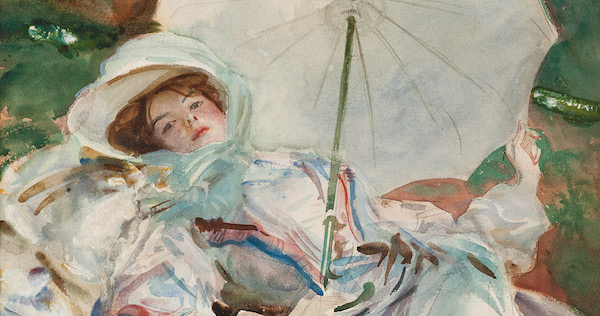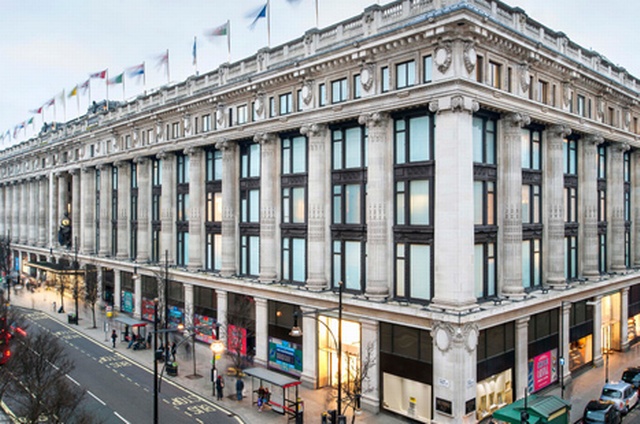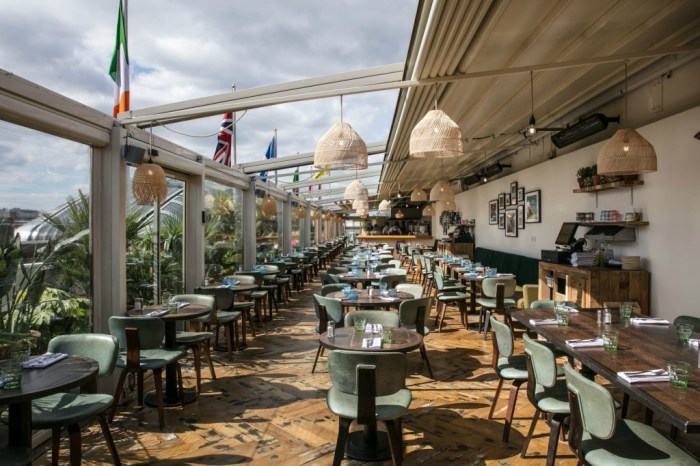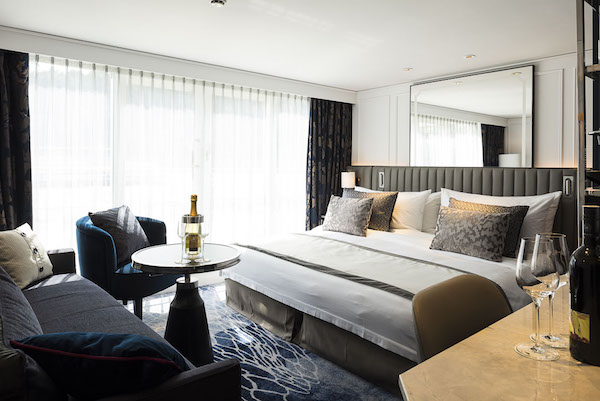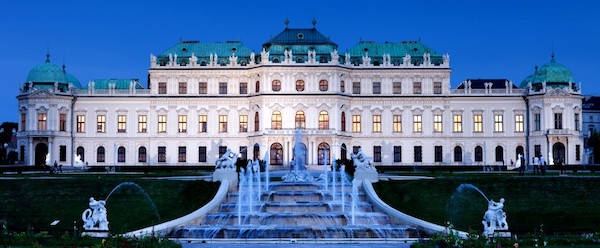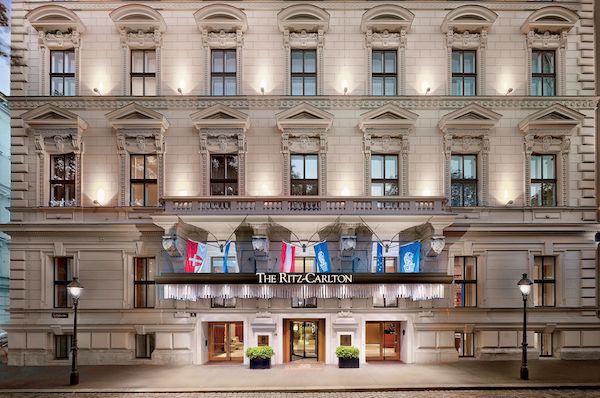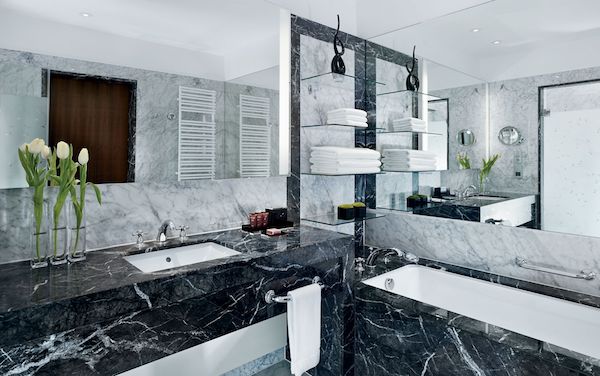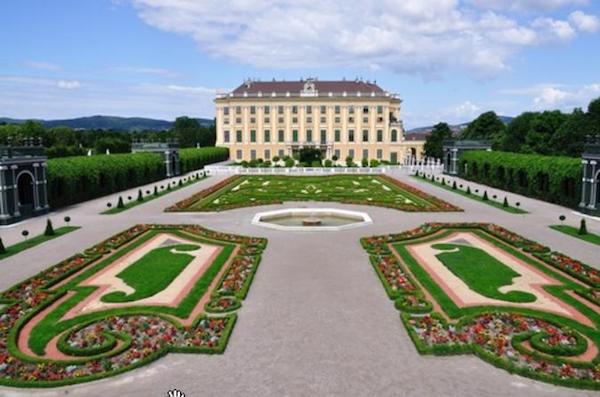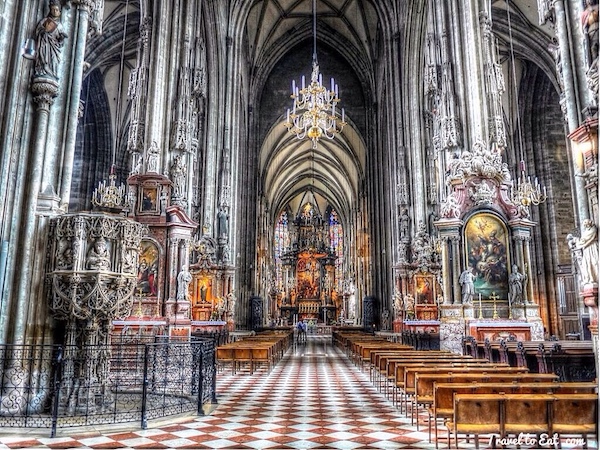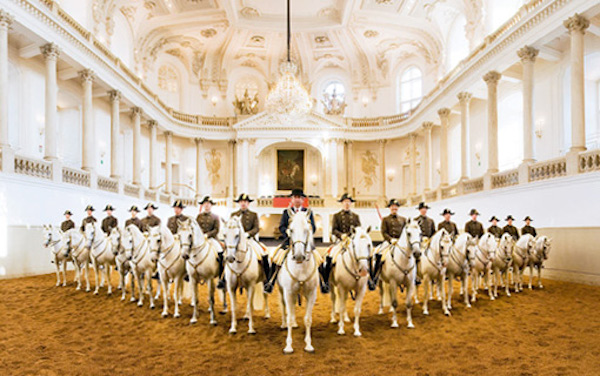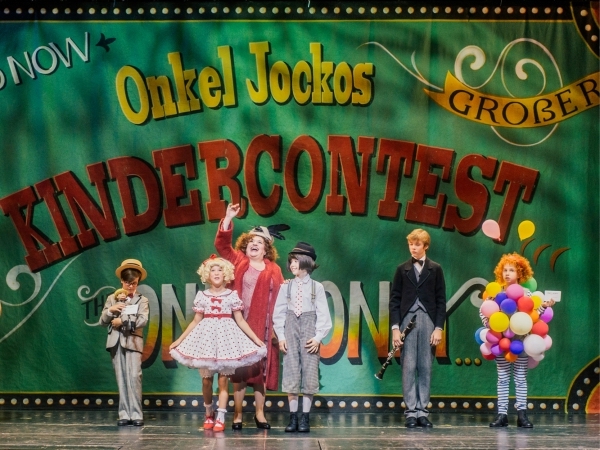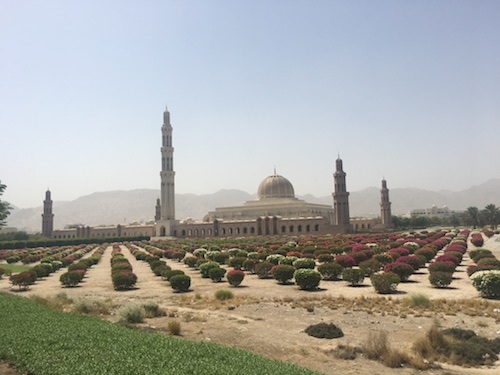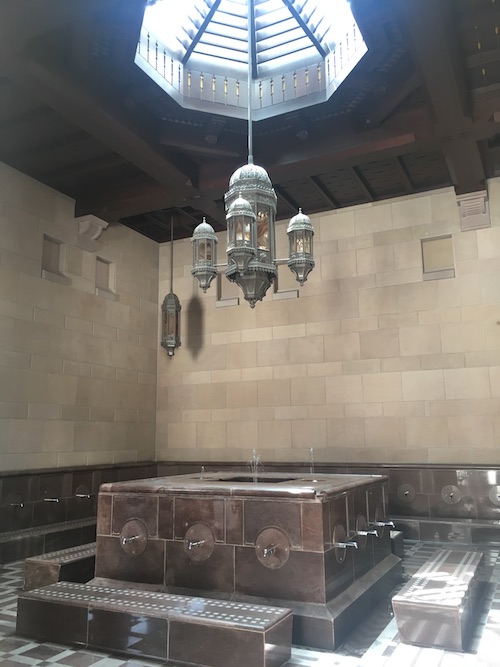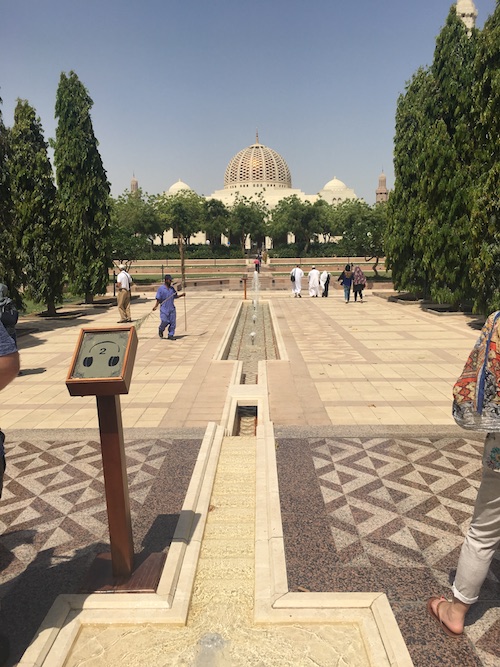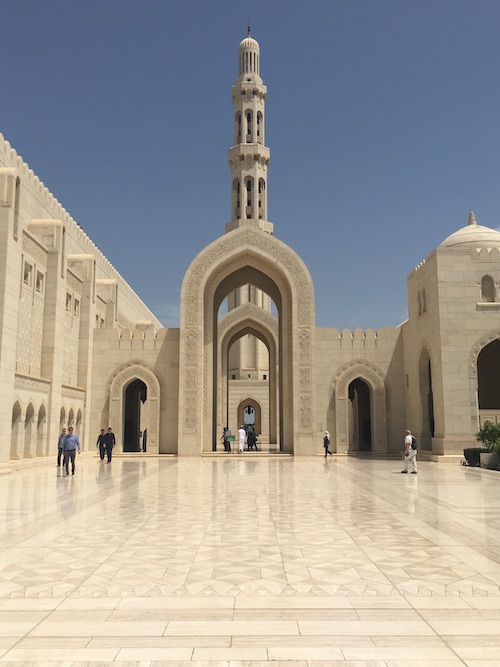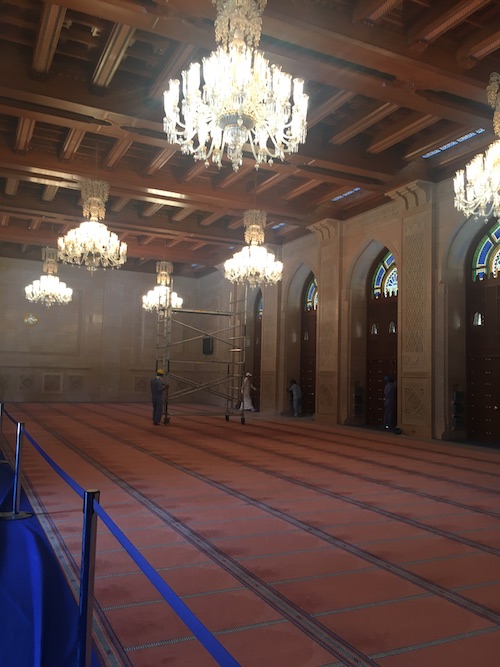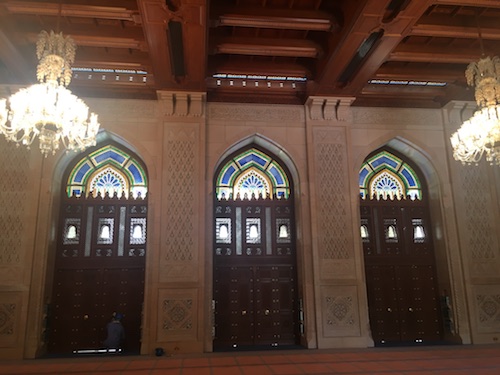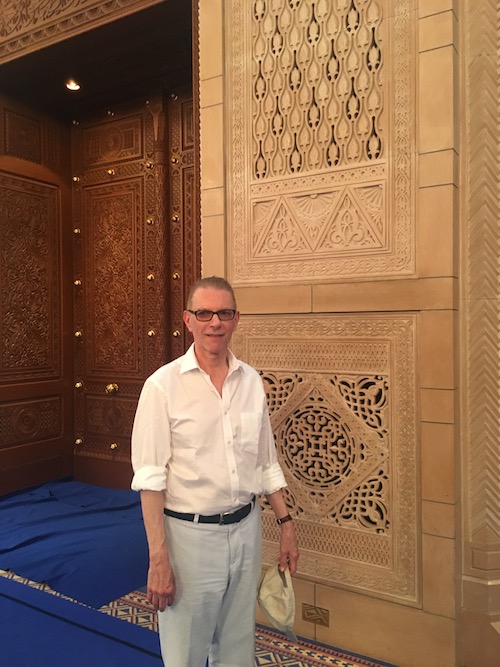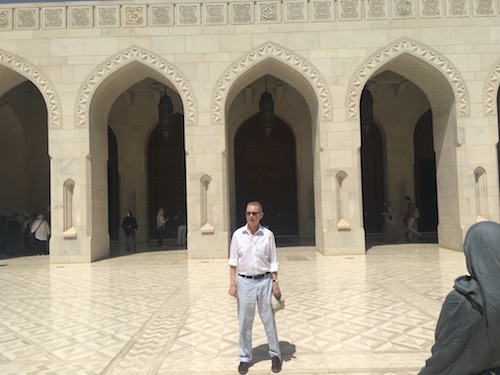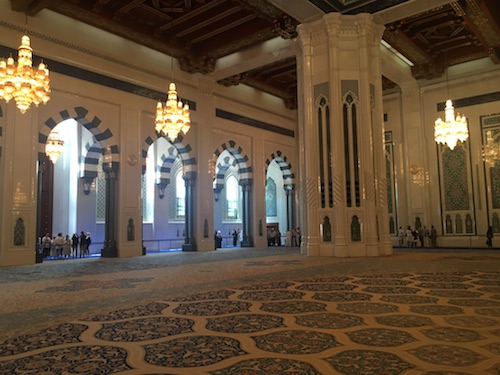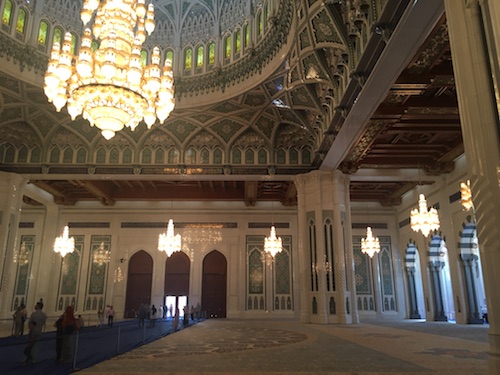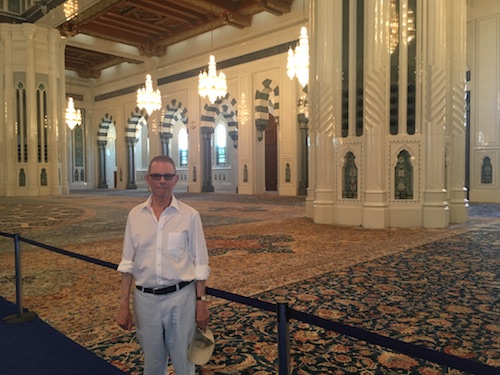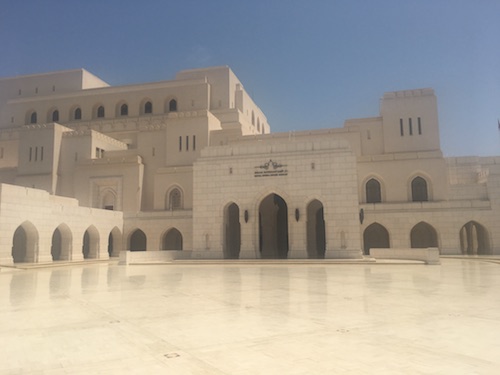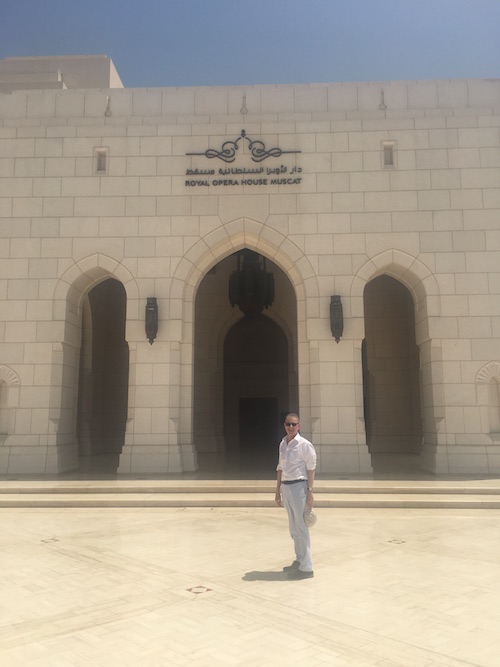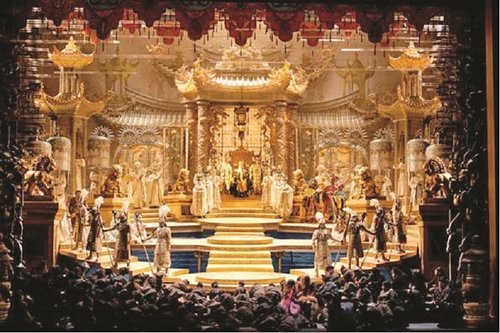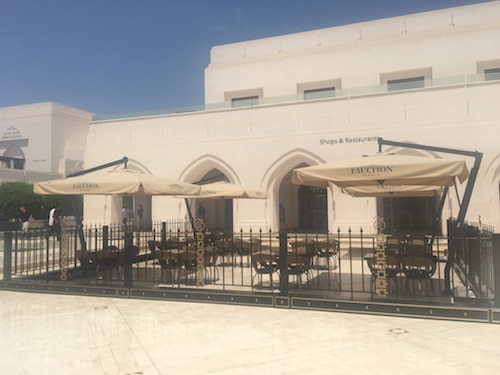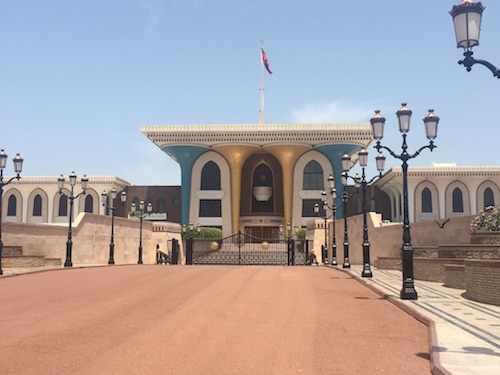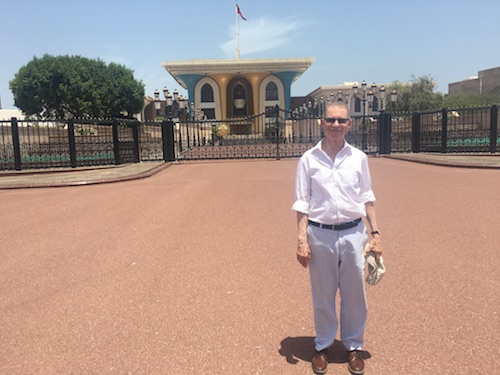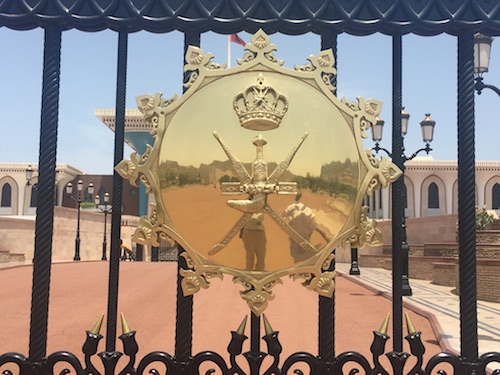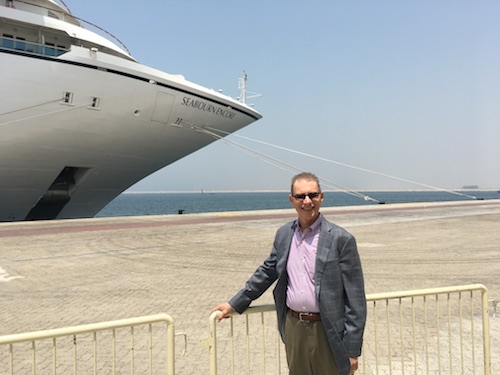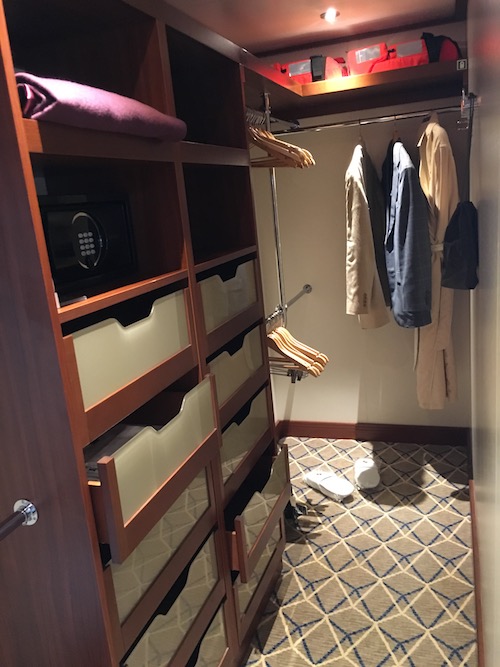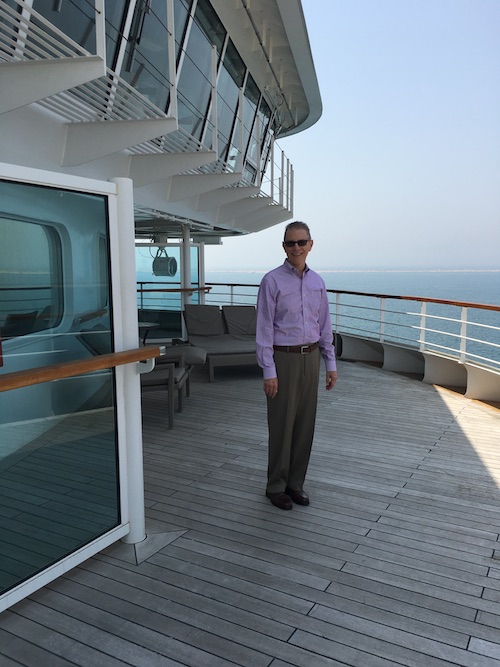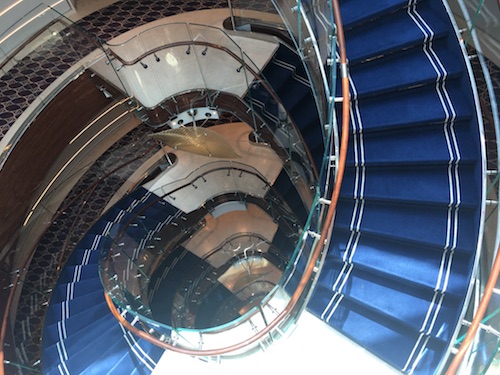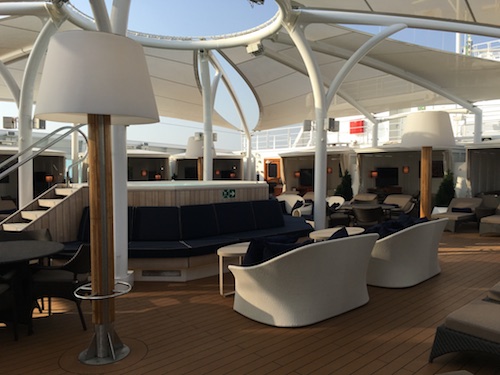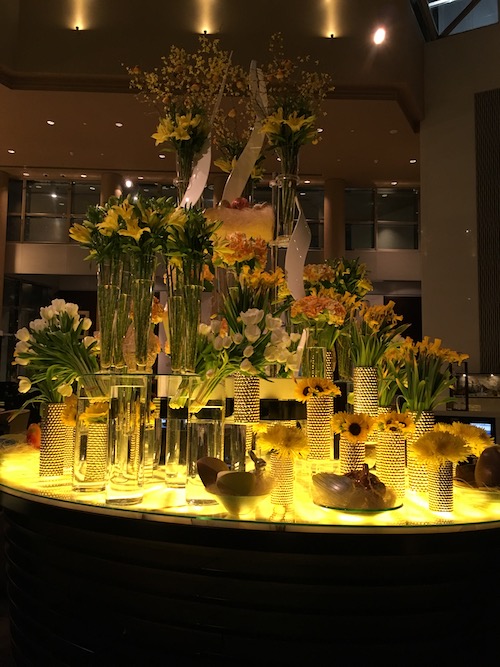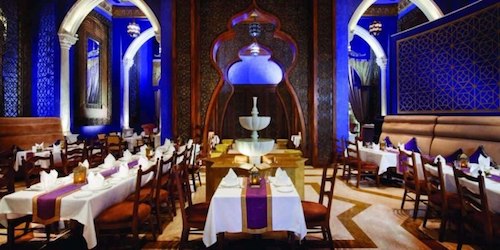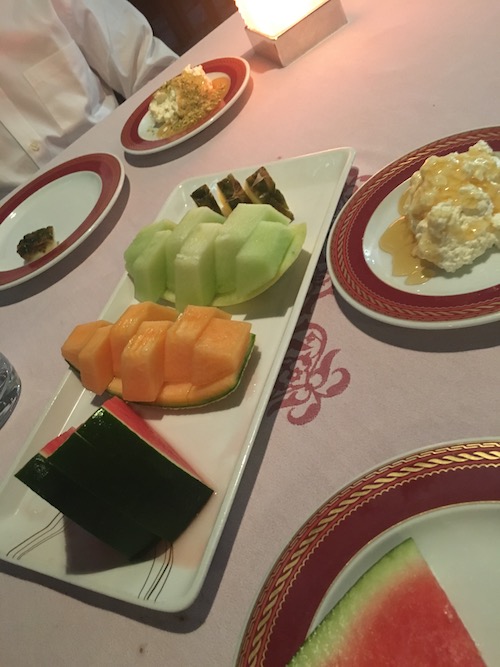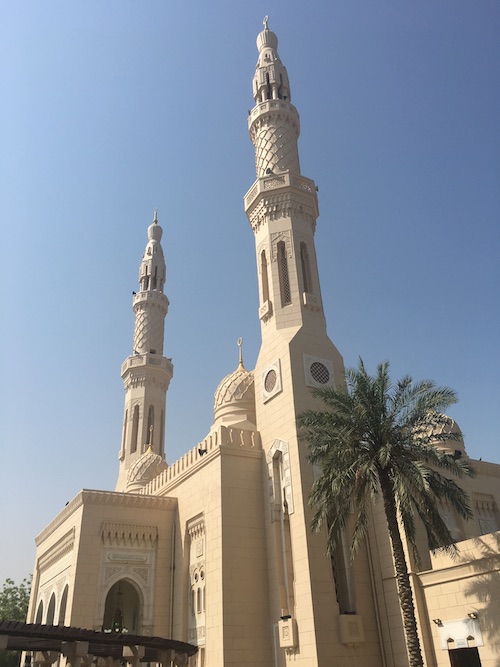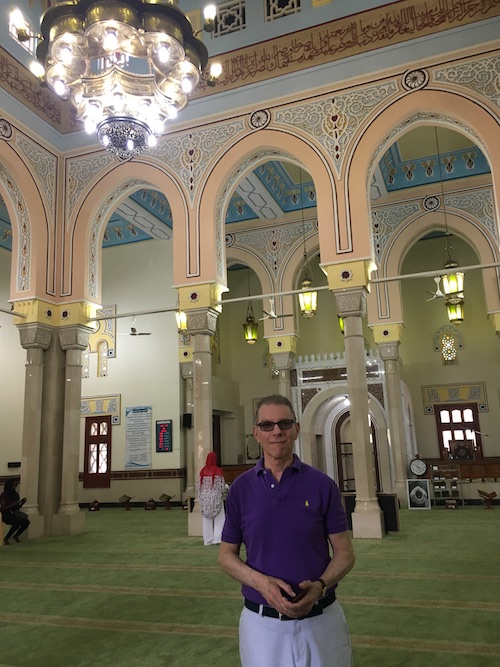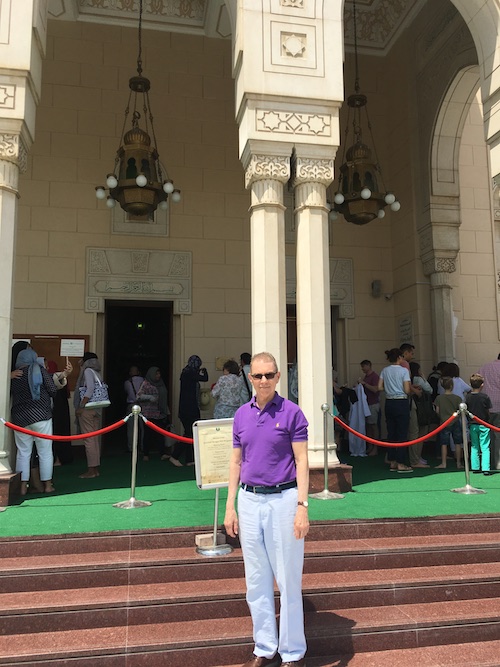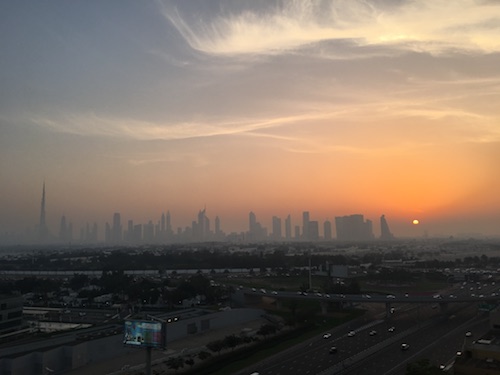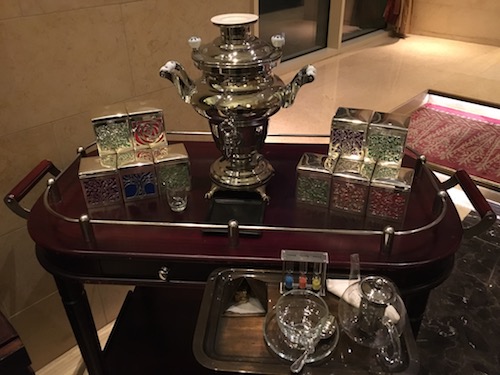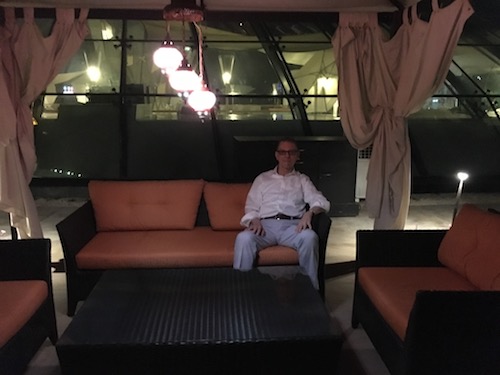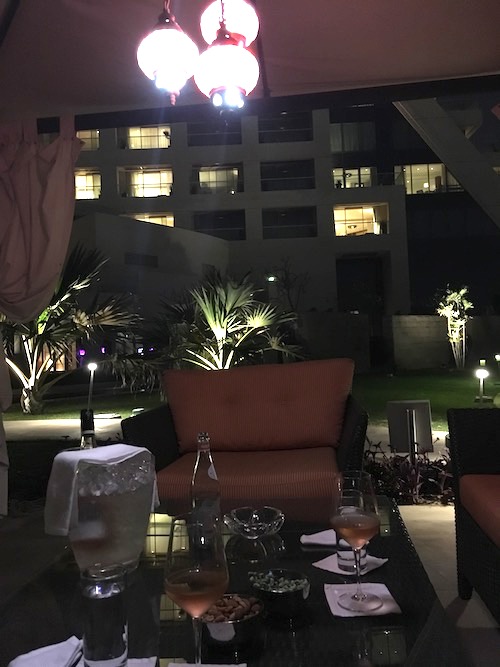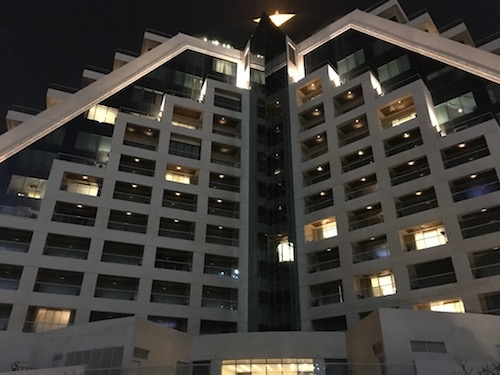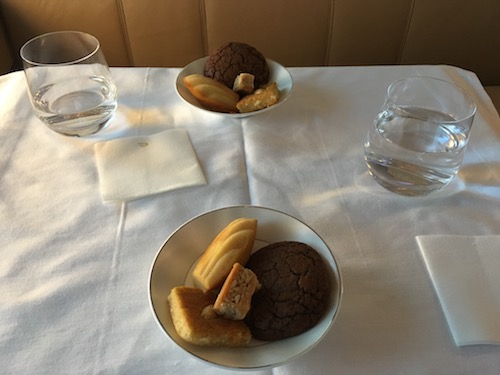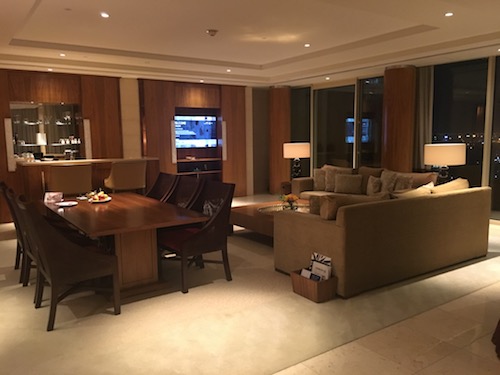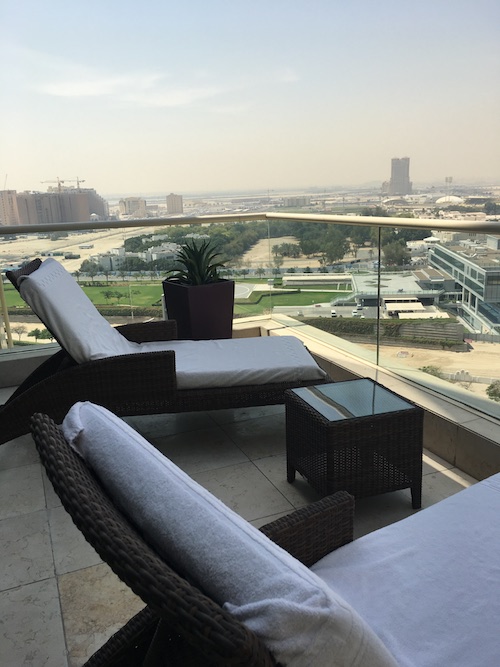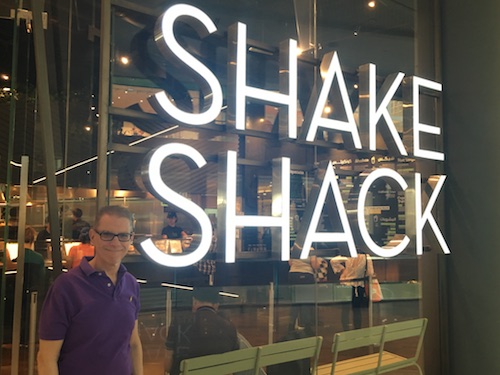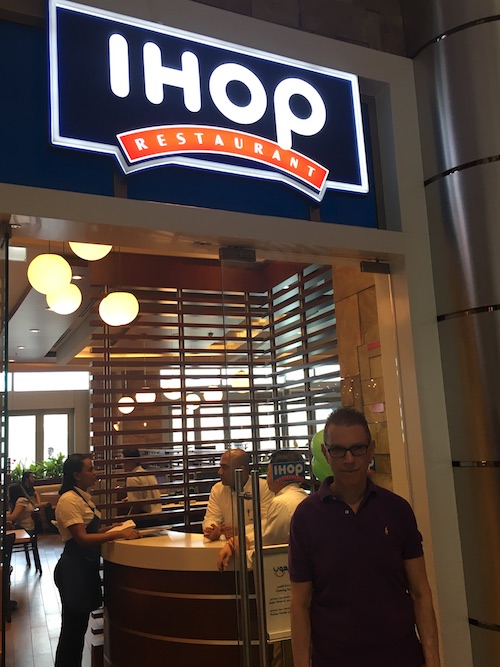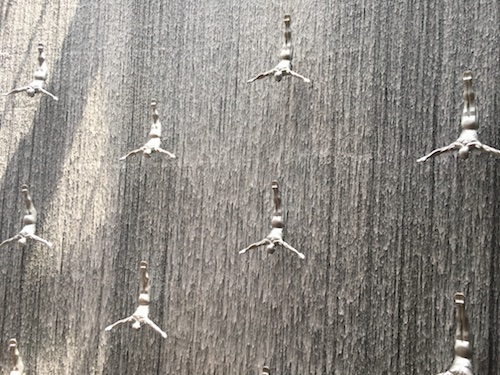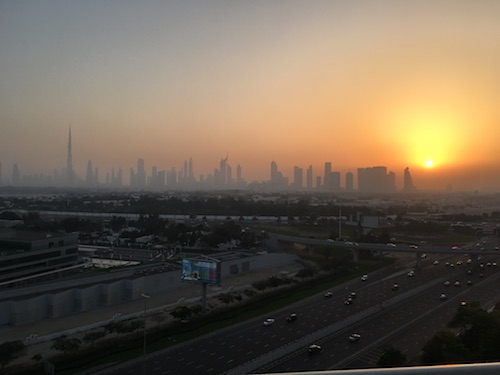Where to begin? Sometimes, if you’re lucky, you’ll be given a gift, a memento, an experience that you’ll remember for the rest of your life. Yesterday, AAC and I were given all that – and more.
When we planned this trip almost two years ago, we knew that our visit to Aqaba and, from there, to the lost city of Petra and then to Wadi Rum, would undoubtedly be the highlight. Even our trip last year to Antarctica did not quite match up to our expectations of this journey, which were more than fulfilled.
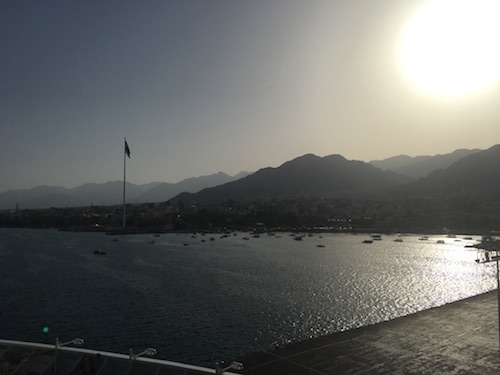
Early morning arrival in Aqaba
Our day began when we docked at Aqaba shortly after 7:00 AM. Because of its strategic location, Aqaba has, for many centuries, been a link in trade routes from Asia to Africa and, also, as a rest stop for pilgrims on their way to Mecca. Many moviegoers will remember Aqaba as a major location in the film, Lawrence of Arabia, which depicted the history of the Arab Revolt, almost exactly 100 years ago. The first half of the film, in fact, relates how the Arabs hatched a daring and unexpected plan to take this stronghold by attacking from the desert, rather than from the sea.
When you enter the port of Aqaba, you’ll see an immense flag atop a 400 foot flagpole – it is the flag of the Arab Revolt.

Because Seabourn Encore was in port for only 11 hours, we elected to take a private excursion to insure that we had sufficient time to visit both Petra and Wadi Rum. The driving time alone from Aqaba to Petra was at least 2 hours, another 90 minutes from there to Wadi Rum and, finally, another hour back to the ship. As our excursion was scheduled to last about 9½ hours, that left 5 hours for seeing the sights – an almost impossibly short amount of time.
Our car was waiting for us as we disembarked the ship. The weather was absolutely perfect: warm, but not hot and a crystal clear blue sky. A quick introduction to our guide, Aziz, our driver Mustafa, and we were off.

A map of Jordan showing Aqaba, Petra and Wadi Rum
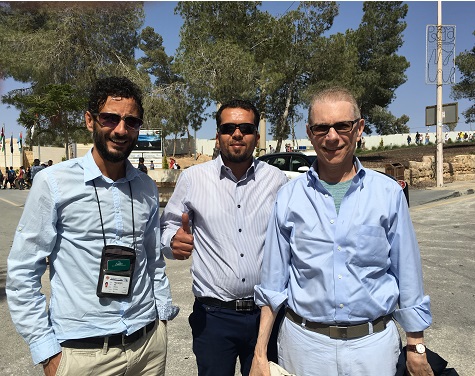
The A Team: Aziz (our guide), Mustafa (our driver) and AAC, CPA
In order to keep this entry manageable and so I can share lots of photos with you, my narrative today will be brief. Here’s what you should know about Petra:
Designated as a UNESCO world Heritage site in 1985, Petra is one of the world’s richest and most unique archeological sites. In order to access the city, you must proceed through a narrow gorge (sometimes only 10 feet wide) called the Bab as-Siq (“Gateway of the Gorge”) which is about a mile in length. While most visitors will walk the gorge, others will choose to travel by donkey or by horse-drawn carriage – and they don’t stop for pedestrians, so be prepared to get out of the way.
Petra was founded by a mysterious nomadic tribe called the Nabateans, who began a gradual migration from Arabia during the 6th century BC. It is thought that, at one time, they lived near Yemen for reasons that will be explained. Because of the relative protection of the Bab as-Siq, they settled in what was to become Petra sometime around 312 BC. The city the Nabateans were to create was carved from solid sandstone. Being in a totally isolated location created many challenges, most especially, creating a viable system to collect and distribute water, and this is where the Nabatean’s connection to Yemen becomes apparent: It is thought that they learned from the Yemenites how to excel in matters of water conservation, became highly skilled water engineers, and were able to irrigate the city with an extensive system of dams, canals and reservoirs.
Of equal importance, the Nabateans constructed a wall to fortify the city, notwithstanding the fact that Petra was almost (but not completely) defended by the surrounding sandstone mountains.
What made the Nabateans the envy of the region was their reputation as incredibly talented traders, who facilitated commerce between China, India, the Far East, Egypt, Syria, Greece and, even, Rome.
The Nabateans prevailed at Petra for many centuries. Although not militarily strong, they found a way, through cunning negotiation, to survive one way or another. It wasn’t until 106 AD that the Romans claimed the Nabatean Kingdom, which they renamed Arabia Petrea. Eventually the city fell into obscurity, known only to the Bedouins, until it was discovered by Swiss explorer, Johann Ludwig Burckhardt. Although the city had fallen into disrepair over the centuries, it wasn’t until over 100 years later – in 1929 – that a team, consisting of folklore expert, Dr. Tawfiq Canaan, Danish scholar, Dr. Ditlef Nielsen and British archeologists Agnes Conway and George Horsfield, began the arduous process of excavating and surveying Petra.
Excavations have continued over the past century and important discoveries have been found as recently as 2004.
OK – enough of that. Let’s get to the pictures!
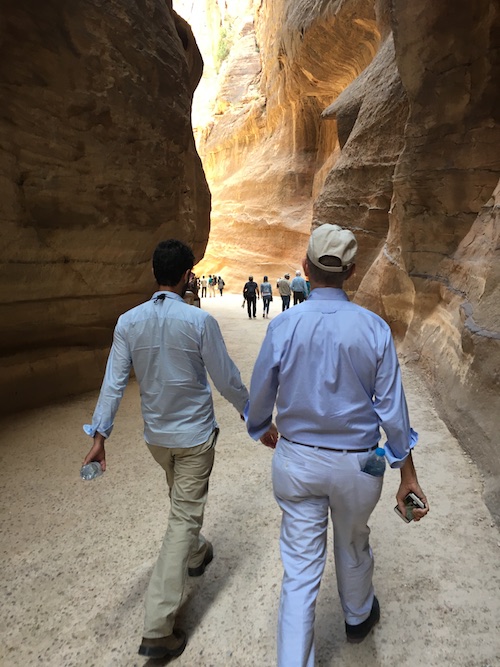
Aziz leading the way; AAC, CPA following
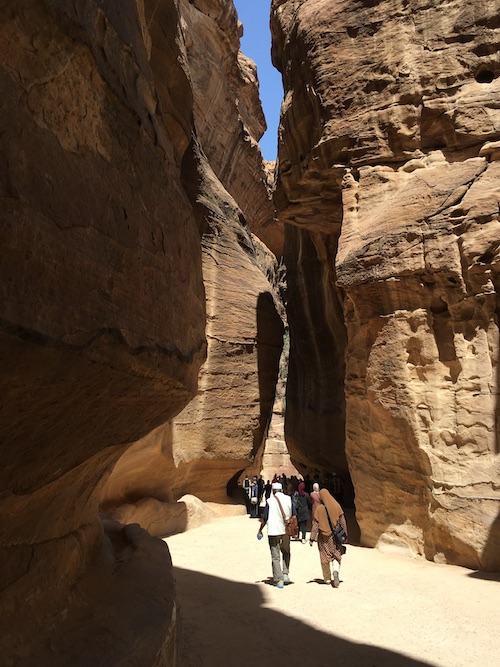
Entering the Bab as-Siq: one mile through the gorge to Petra
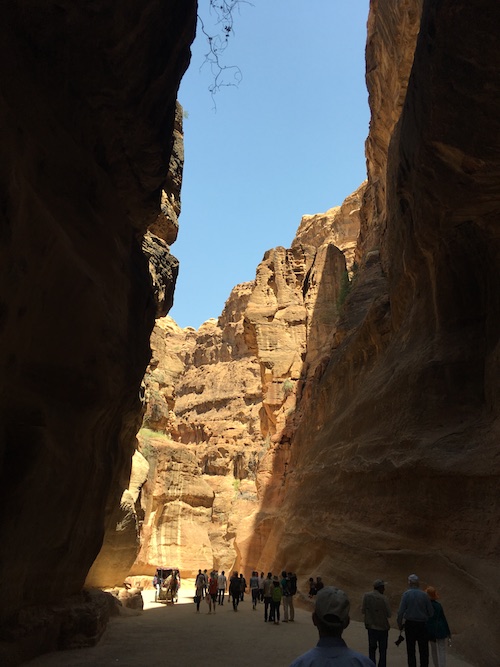
The continually changing and surprising Siq


One of many carvings found along the way
Finally, we come to a narrow passage with something in front of us:
Our exit from the Siq and entrance into Petra
(I shot that video myself!)
I would have to say that that short walk of about 100 or so feet from the Siq into the city was one of the most impressive that I’ve ever taken. As you can see, the first site you view when stepping into the city is the iconic Treasury.
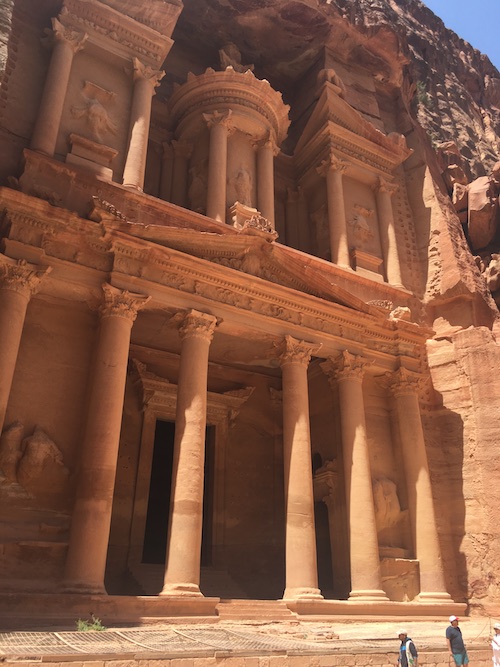
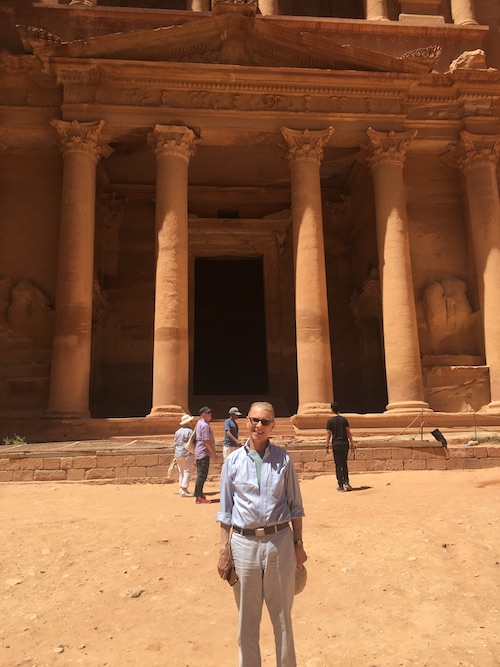
AAC, CPA in front of the Treasury

Extraordinary colors in the sandstone at Petra – all natural
The Nabateans were heavily influenced by the Greeks and built an amphitheater at which the great Greek plays would be performed.

The amphitheater at Petra
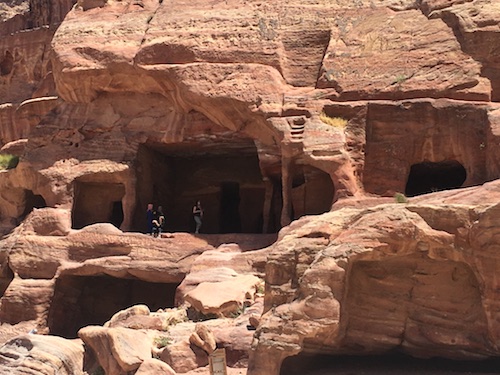
The royal tombs

Camels are available for riding
We spent about an hour walking around and seeing the various sites of this amazing city.
Then it was time to retrace our steps through the Siq, have a quick lunch and head towards our next stop, Wadi Rum.
Wadi Rum – Valley of the Moon – is located in Southern Jordan and lies about 37 miles east of Aqaba. Going all the way back to prehistoric times, it has been inhabited by many different cultures – including the Nabateans. Today is it home almost exclusively to the Zalabia Bedouin. Again, thanks to the worldwide popularity of the film Lawrence of Arabia, Wadi Rum is the 2nd most popular tourist attraction (after, of course, Petra). In the movie, Wadi Rum was depicted as the summer camp of the great Howeitat warrior, Auda Abu Tayi. Auda was, in fact, a significant player in the Arab revolt as his tribesmen were thought to be the fiercest fighters in the desert.

Famed Howeitat chieftain: Auda Abu Tayi
But enough of Auda – back to Wadi Rum. From Petra, we drove for almost 90 minutes before arriving at the Visitors Center at Wadi Rum. You can see the wadi as you approach and it’s everything you imagined it would be – and more.
To get around the wadi, we transferred to what appeared to be a 4-wheel pickup truck. Our driver and Aziz sat in the front and we were in the back. We were shaded by a blanket and there were 2 metal-type benches on either side of the truck with some upholstered padding. Once we got settled in, we were off.
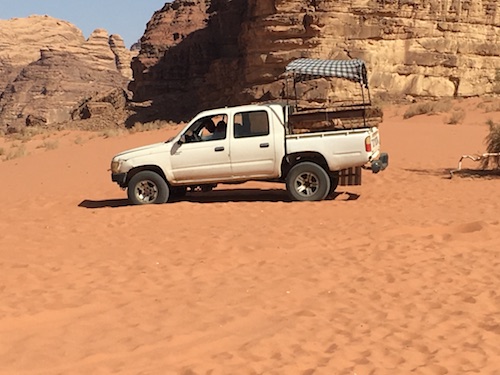
Our transportation which transported us through Wadi Rum
We were grateful for the padding, but there were a lot of bumps and bouncing around during our time in the wadi – and it was totally worth it.
The weather was absolutely perfect: bright blue skies, temperatures around 80 degrees and a moderate breeze, which kept us cool and comfortable.
From the valley floor, you are astounded at the height of the many rock formations. The highest of them, Jabal Umm ad Dami is over 6,000 feet high. The wadi floor is already at an elevation of 2,000 feet.
Our first stop, less than 10 minutes from where we started, was directly in front of, arguably, the most famous site at Wadi Rum: the rock formation popularly known as Seven Pillars of Wisdom (taken from Lawrence’s epic account of the Arab Revolt):

We were literally several hundred feet away from this famed formation
Just behind us was a sandy path leading several hundred feet up to a perfect spot for viewing the entire area.

AAC, CPA climbs in the sand (our truck below him in the distance)

The view from the top – our truck is far below in the distance
360 Degrees of Wadi Rum

AAC, CPA climbing down from the heights
Notice, if you will, that we seem to be completely alone in the wadi – for almost the entire time we were there, it was as if Wadi Rum was this well-kept secret just for us (and the few people we met there).

Desert sagebrush: so reminiscent of desert scenes in Lawrence of Arabia
Once we climbed back down to the wadi, we drove on for about 10 minutes to another site.

This graffiti – found on a rock formation – was a way for caravans
to communicate with one another

AAC, CPA and our intrepid guide, Aziz
We next stopped at a functioning Bedouin camp. When researching our excursion to Wadi Rum, I came across many references to this visit, and I was somewhat hesitant, as it seemed like a really touristy thing to do (which turned out not to be the case at all).
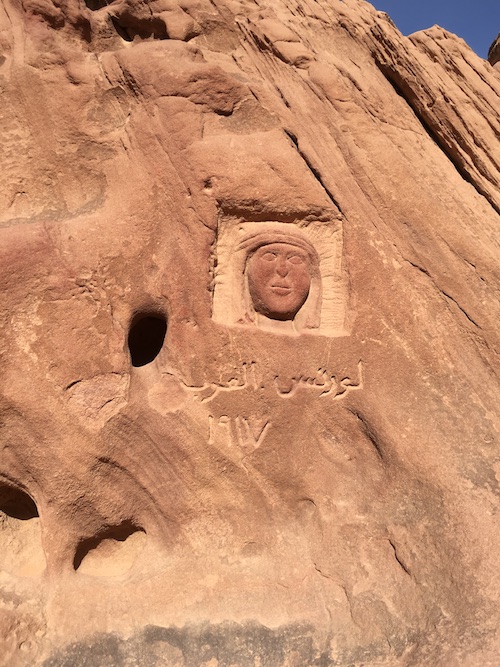
At the entrance to the camp, we discovered this frieze of T.E. Lawrence,
dating back to 1917 – the height of the Arab Revolt
From there, it was a few steps to the Bedouin tent.
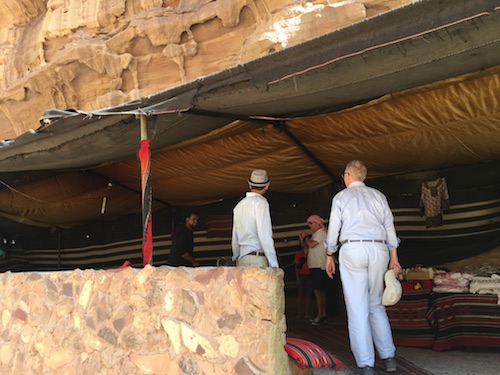
Aziz and AAC, CPA enter the Bedouin tent
We were welcomed and offered a refreshing and stimulating glass of herbal tea. The tea was being brewed in what appeared to be a wood-burning fire pit.
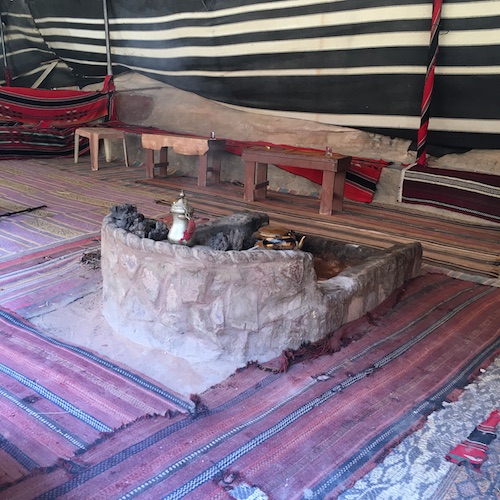
The “stove” inside the Bedouin tent
Except for the footwear being worn by the Bedouins (Nikes, perhaps?), we felt that it could have been 100 or 300 years ago, sitting in this tent, sipping hot tea, relaxing. Our hosts asked for nothing, would not accept our money for the tea, and were happy for us to stay for as long as we liked. In full disclosure, there was a table of wares and souvenirs close by, but no reference was made to them, nor were we encouraged to look at them. I believe that it would have been considered bad manners if our hosts were to make an issue of it.
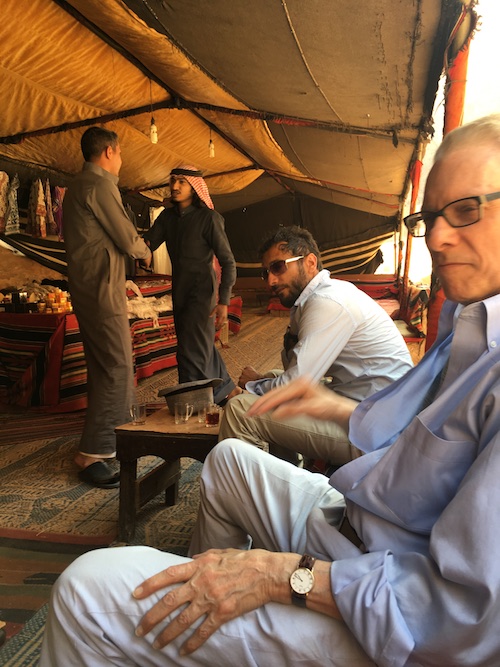
Our driver chats with one of the Bedouins, Aziz and AAC, CPA
contemplate their tea
After awhile, we thanked our hosts and took our leave. AAC, CPA and I climbed into the back of the truck for the last time and we headed back to the Visitor’s Center. We took a slightly different route, which enabled us to see more of the rock formations.

AAC, CPA in the back of the truck, taking in the wondrous sites of Wadi Rum
And then, we were at the back of the Visitors Center and pouring desert sand out of our shoes. It was now time to return to the ship and reflect upon the day’s activities.
The drive back to Aqaba took about an hour and it was now very quiet in the car, each of us lost in our own thoughts and reminiscences.
For myself, I am keenly aware of how lucky I’ve been to be able to have these kinds of experiences. When we were planning this excursion, it was very important that we would be able to visit both Petra and Wadi Rum. We were well aware that yesterday might have been our only opportunity to get to these landmark places.
If you were to ask me which one was my favorite, I realize that it would not be difficult to answer. Petra was as I expected it to be: a miracle of construction and execution, dating back over 2,000 years. But the thing about Wadi Rum, which will stay with me for the rest of my life is that it felt like it was in existence just for us. If you can imagine this vast space, which was totally quiet and devoid of all life, except for the four of us and the few Bedouins we met along the way, it was mystical in a way.
And then it occurred to me that this is the very place where world history has happened, not just Lawrence and Auda a hundred years ago, but prophets and characters from the bible whose footprints were in the very same sand where AAC, CPA and I walked yesterday. The desert has always been a mystical and spiritual place, where great men and heroes have trod. While I am not particularly religious, I do have faith, and it’s easy to understand that momentous events have taken place in this very spot.
I know that we each have our own bucket list items, but I would strongly encourage you to make an addendum to your list and include Wadi Rum and Petra. It’s an arduous journey, and you will not regret it at all.

One last look at Wadi Rum from the back of the truck
